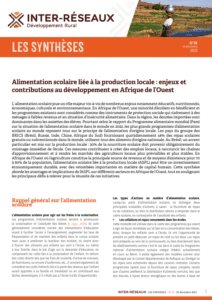The discussion of food availability has expanded beyond staple foods to foods required for healthy diets. These include fruits, tree nuts, pulses, and some vegetables. Traditional metrics such as production, supply, and trade are being contextualized by an understanding of the link to land use, specifically as it relates to biodiversity, climate change, and ecosystem services. Pollinator-dependent crops provide significant proportions of many key nutrients to humans. To examine the dependence of crop production on pollinators, we develop a worst-case scenario of complete pollinator decline and apply it to FAO crop production data for 182 countries. We then use FAO trade and agri-environmental data to develop a Pollinator Threat Index for 121 countries which considers fluctuations in temperature, non-practice of organic agriculture, pesticide use, and beehive trade. Findings illustrate that there is universal vulnerability to crop production for citrus fruits, fruit, pulses, tree nuts, and vegetables. The greatest losses would occur in fruit (northern hemisphere) and tree nuts (southern hemisphere). Many highly populated countries, along with much of the northern hemisphere, experience the greatest threats to their pollinator populations. Results suggest geographical inequities in access to food for healthy diets might be compounded by losses of pollinator-dependent crops.







